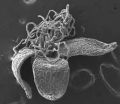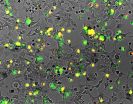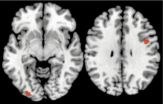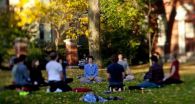(Press-News.org) Philadelphia, PA, February 12, 2013 – Opioids are frequently prescribed for pain management in noncancer patients, but recommended clinical guidelines for monitoring effectiveness and signs of drug abuse are often not implemented. Alongside well-documented racial disparities in prescribing opioid medications for pain, researchers report racial differences in the use of recommended opioid monitoring and follow-up treatment practices. The study is published in the current issue of PAIN®.
"In our study, we examined whether racial disparities exist in a more comprehensive set of opioid monitoring and treatment practices, including the use of an opioid agreement, the assessment of pain during follow-up visits, the use of urine drug screenings, and referrals to pain and substance abuse specialty clinics," says lead investigator Leslie R.M. Hausmann, PhD, Core Investigator, Center for Health Equity Research and Promotion, VA Pittsburgh Healthcare System, and Assistant Professor of Medicine, University of Pittsburgh.
A retrospective cohort study examined racial differences in the documentation of pain and the involvement of specialists in the care of patients who are prescribed opioids for chronic noncancer pain. Investigators pulled data from electronic health records for 1646 white and 253 black patients who filled opioid prescriptions for noncancer pain for more than 90 days at the Veterans Affairs Pittsburgh Healthcare System pharmacy from October 2007 to September 2009. Additional data about opioid monitoring and follow-up treatment practices were pulled for a 12-month follow-up period, to complete a comprehensive profile.
Of these patients, nearly 94% were male, 22% were aged 65 or older, and 45% were married or lived with a partner. Patients were most often being treated for back pain or joint pain. About half of the study sample had at least one comorbid physical or mental health diagnosis, and one-third had a history of substance abuse.
Compared with white patients, black patients were significantly younger, less likely to be married, and less likely to have back pain. They had more physical comorbid conditions, more primary care appointments, and higher maximum pain scores. They were less likely to have a mental health diagnosis. Both study groups were equally likely to have a history of substance abuse. However, statistical analysis revealed significant racial differences in recommended opioid monitoring and follow-up treatment practices. Specifically, pain levels were less frequently documented for black patients than for white patients during medical visits. Among patients who had at least one urine drug test, black patients were also subjected to more tests, especially if they were on higher doses of opioids. Finally, black patients were less likely than white patients to be referred to a pain specialist and more likely to be referred for substance abuse assessment after being prescribed opioids.
"The emerging picture is that black patients who are able to overcome the barriers to securing a prescription for opioid medications may still be subjected to differential monitoring and follow-up treatment practices that could impact the effectiveness of their pain management," concludes Dr. Hausmann. "Addressing disparities in opioid monitoring practices may be a previously neglected route to reducing racial disparities in pain management."
Dr. Hausmann and colleagues suggest that "providing pain management support to primary care providers in the form of training on recommended guidelines and assistance with managing patients on long-term opioid regimens could improve overall adherence to recommended guidelines."
In an accompanying commentary, Megan Crowley-Matoka, PhD, of the Medical Humanities and Bioethics Program, Feinberg School of Medicine, Northwestern University, Chicago, says, "Pain management remains a persistent and pervasive problem across the practice of medicine. Despite strong consensus about the clinical, ethical, and economic importance of better managing pain, serious problems with both quality and equity continue to be routinely reported. The findings of Hausmann et al. suggest that, even for patients who overcome the barriers to receiving opioids, implementation of guideline recommendations is highly uneven and often racially disparate. Yet it is difficult to fully interpret what these data really tell us about the quality or equity of pain care, because we still know far too little regarding the efficacy of many of these practices, as well as what their appropriate level of use should be for most patients – much less how their differential use may affect black and white patients. Further complicating matters is the fact that so many of these practices associated with good pain care also run serious risk of being used by clinicians – and experienced by patients – in ways that are both punitive and prejudicial. These findings push us to move beyond this important first step of asking whether these practices are used, to examine more thoroughly and rigorously why and how they are used, and what outcomes are thus achieved."
### END
Does race make a difference in monitoring of opioid pain therapy?
New study reveals racial disparities in chronic pain management, reports Pain
2013-02-13
ELSE PRESS RELEASES FROM THIS DATE:
Ice age extinction shaped Australian plant diversity
2013-02-13
Researchers have shown that part of Australia's rich plant diversity was wiped out by the ice ages, proving that extinction, instead of evolution, influences biodiversity.
The research led by the University of Melbourne and University of Tasmania has shown that plant diversity in South East Australia was as rich as some of the most diverse places in the world, and that most of these species went extinct during the ice ages, probably about one million years ago.
The team's work was published in the prestigious journal Proceedings of the National Academy of Sciences.
Dr ...
Flood research shows human habits die hard
2013-02-13
New research has come up with ways to quickly assess flood damage to houses while also showing most people didn't intend to make changes to reduce their vulnerability after the 2010-11 floods in Australia.
Two separate reports from the National Climate Change Adaptation Research Facility released today show how lessons learned from households affected by the 2010-11 Australian floods can minimise damage under current and future climates.
The report Analysis of Damage to Buildings Following the 2010 Eastern Australia Floods evaluated the role of development controls ...
Blackbirds in the spotlight
2013-02-13
This press release is available in German.
Street lamps, traffic lights and lighting from homes are causing a rise in our night-time light levels. For some time now, scientists have suspected that artificial light in our towns and cities at night could affect plants, animals and us, humans, too. Studies, however, that have tested this influence directly are few. Scientists from the Max Planck Institute for Ornithology in Radolfzell, Germany, recently investigated how light conditions in urban areas at night affect European blackbirds (Turdus merula). They found that animals ...
Copper depletion therapy keeps high-risk triple-negative breast cancer at bay
2013-02-13
NEW YORK (February 13, 2013) -- An anti-copper drug compound that disables the ability of bone marrow cells from setting up a "home" in organs to receive and nurture migrating cancer tumor cells has shown surprising benefit in one of the most difficult-to-treat forms of cancer -- high-risk triple-negative breast cancer.
The median survival for metastatic triple-negative breast cancer patients is historically nine months. However, results of a new phase II clinical trial conducted by researchers at Weill Cornell Medical College and reported in the Annals of Oncology shows ...
UNC researchers discover gene that suppresses herpesviruses
2013-02-13
Chapel Hill, NC – Kaposi's sarcoma-associated herpesvirus (KSHV) and Epstein-Barr virus (EBV) hide within the worldwide human population. While dormant in the vast majority of those infected, these active herpesviruses can develop into several forms of cancer. In an effort to understand and eventually develop treatments for these viruses, researchers at the University of North Carolina have identified a family of human genes known as Tousled-like kinases (TLKs) that play a key role in the suppression and activation of these viruses.
In a paper published by Cell Host ...
'A drop of ink on the luminous sky'
2013-02-13
This part of the constellation of Sagittarius (The Archer) is one of the richest star fields in the whole sky -- the Large Sagittarius Star Cloud. The huge number of stars that light up this region dramatically emphasise the blackness of dark clouds like Barnard 86, which appears at the centre of this new picture from the Wide Field Imager, an instrument mounted on the MPG/ESO 2.2-metre telescope at ESO's La Silla Observatory in Chile.
This object, a small, isolated dark nebula known as a Bok globule [1], was described as "a drop of ink on the luminous sky" by its discoverer ...
Study suggests infant deaths can be prevented
2013-02-13
(TORONTO, Canada – Feb. 13, 2013) – An international team of tropical medicine researchers have discovered a potential method for preventing low birth weight in babies born to pregnant women who are exposed to malaria. Low birth weight is the leading cause of infant death globally.
The findings of Malaria Impairs Placental Vascular Development, published today online ahead of print in Cell Host & Microbe, showed that the protein C5a and its receptor, C5aR, seem to control the blood vessel development in the mother's placenta. Without adequate blood vessels in the placenta, ...
Carnegie Mellon brain imaging research shows how unconscious processing improves decision-making
2013-02-13
PITTSBURGH—When faced with a difficult decision, it is often suggested to "sleep on it" or take a break from thinking about the decision in order to gain clarity.
But new brain imaging research from Carnegie Mellon University, published in the journal "Social Cognitive and Affective Neuroscience," finds that the brain regions responsible for making decisions continue to be active even when the conscious brain is distracted with a different task. The research provides some of the first evidence showing how the brain unconsciously processes decision information in ways ...
Study in mice yields Angelman advance
2013-02-13
PROVIDENCE, R.I. [Brown University] — In a new study in mice, a scientific collaboration centered at Brown University lays out in unprecedented detail a neurological signaling breakdown in Angelman syndrome, a disorder that affects thousands of children each year, characterized by developmental delay, seizures, and other problems. With the new understanding, the team demonstrated how a synthesized, peptide-like compound called CN2097 works to restore neural functions impaired by the disease.
"I think we are really beginning to understand what's going wrong. That's what's ...
A neural basis for benefits of meditation
2013-02-13
PROVIDENCE, R.I. [Brown University] — Why does training in mindfulness meditation help patients manage chronic pain and depression? In a newly published neurophysiological review, Brown University scientists propose that mindfulness practitioners gain enhanced control over sensory cortical alpha rhythms that help regulate how the brain processes and filters sensations, including pain, and memories such as depressive cognitions.
The proposal, based on published experimental results and a validated computer simulation of neural networks, derives its mechanistic framework ...
LAST 30 PRESS RELEASES:
Numbers in our sights affect how we perceive space
SIMJ announces global collaborative book project in commemoration of its 75th anniversary
Air pollution exposure and birth weight
Obstructive sleep apnea risk and mental health conditions among older adults
How talking slows eye movements behind the wheel
The Ceramic Society of Japan’s Oxoate Ceramics Research Association launches new international book project
Heart-brain connection: international study reveals the role of the vagus nerve in keeping the heart young
Researchers identify Rb1 as a predictive biomarker for a new therapeutic strategy in some breast cancers
Survey reveals ethical gaps slowing AI adoption in pediatric surgery
Stimulant ADHD medications work differently than thought
AI overestimates how smart people are, according to HSE economists
HSE researchers create genome-wide map of quadruplexes
Scientists boost cell "powerhouses" to burn more calories
Automatic label checking: The missing step in making reliable medical AI
Low daily alcohol intake linked to 50% heightened mouth cancer risk in India
American Meteorological Society announces Rick Spinrad as 2026 President-Elect
Biomass-based carbon capture spotlighted in newly released global climate webinar recording
Illuminating invisible nano pollutants: advanced bioimaging tracks the full journey of emerging nanoscale contaminants in living systems
How does age affect recovery from spinal cord injury?
Novel AI tool offers prognosis for patients with head and neck cancer
Fathers’ microplastic exposure tied to their children’s metabolic problems
Research validates laboratory model for studying high-grade serous ovarian cancer
SIR 2026 delivers transformative breakthroughs in minimally invasive medicine to improve patient care
Stem Cell Reports most downloaded papers of 2025 highlight the breadth and impact of stem cell research
Oxford-led study estimates NHS spends around 3% of its primary and secondary care budget on the health impacts of heat and cold in England
A researcher’s long quest leads to a smart composite breakthrough
Urban wild bees act as “microbial sensors” of city health.
New study finds where you live affects recovery after a hip fracture
Forecasting the impact of fully automated vehicle adoption on US road traffic injuries
Alcohol-related hospitalizations from 2016 to 2022
[Press-News.org] Does race make a difference in monitoring of opioid pain therapy?New study reveals racial disparities in chronic pain management, reports Pain





